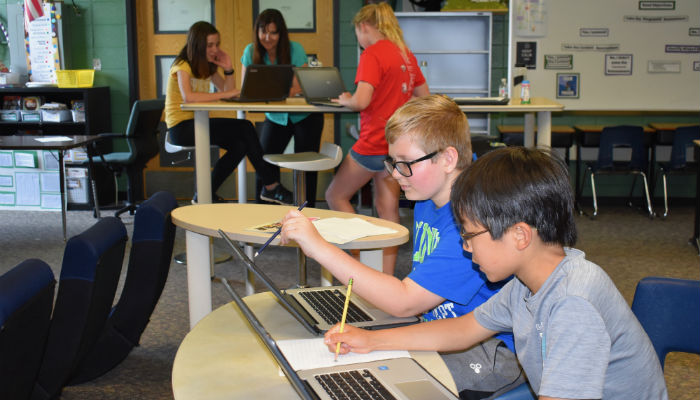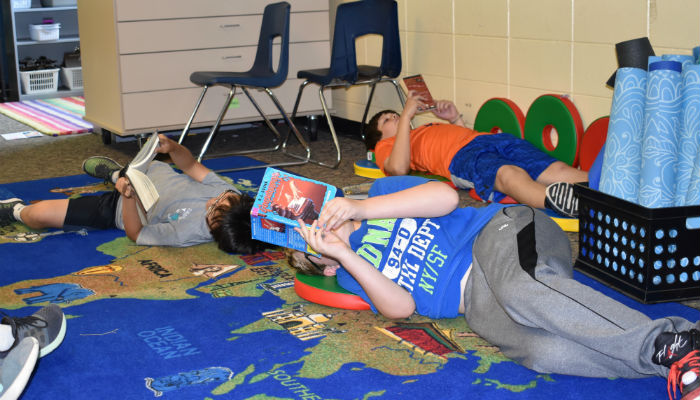
“Wow, this classroom is so cool!”
“Wait, can we really sit ANYWHERE?”
“Where are the desks?”
These are just some of the things students say when they first walk into my Summit Learning classroom on the first day of school. It’s the alternative seating that gets them.
When I made the decision to become a Summit Learning teacher two years ago, I decided to also embrace alternative seating in my classroom. Self-directed learning and individualized instruction really go hand-in-hand with giving students choice in where they learn best.
Just like my decision to teach with Summit Learning, encouraging alternative seating is a decision I have never regretted. I can’t imagine going back to everyone learning the same lessons all day long, and I can’t imagine students all sitting at the same desks, in straight rows.
Learning Self-Direction
During the first hour of every day in our class we practice Self-Direction. If you walk into my room in the morning you would see many different things: three or four students working in study groups at a round table, a few students taking assessments at the testing station, several students working independently at stand-up desks, me sitting next to a student on the floor mentoring and talking about goals, other students working in small groups out in the hallway.
Everyone is working on what they need to learn, based on their own objectives and understanding. It’s like a finely tuned symphony of learning.
Some days in between mentoring talks,I will glance up in delight as I watch it all happen. It warms my teacher heart to see the engagement, hear learning talk, and feel the positive energy.

Projects
If you walked into my room as students work on Projects, you would see a totally different style of teaching and learning.
At the beginning of Project time, we all meet at the front of the room to huddle on a large world-map rug. Students bring their Chromebooks and sit on the floor. I’ll go over our priorities for the day, and review our Focus Area learning objectives for the day on the whiteboard. It’s my mini-lesson of the day, and it lets the students know what to accomplish as they work on Projects.
After I check for understanding and answer any questions that come up, students will disburse to their favorite spots.
I often pull together small groups of four or five students who need some scaffolding, or resources to make a Cognitive Skill more accessible.
When the kids “get it,” they peel off and start work on their own. I always walk around the classroom, checking in with all of the students to see how they are doing and reinforce concepts as they need it.
I use the data in the Summit Learning Platform to help me prioritize my instruction: who needs extra help, who needs time, and who needs an additional challenge.
Project time is a busy, focused, and fun time with lots of variety and higher-level thinking.

Independent Daily Reading
For the last 30 minutes of every day, we give all of the students an opportunity to go old-school. They put away their computers and “get lost in a book” during Independent Daily Reading time. It’s also a great chance for me to touch base with students that I haven’t mentored with yet that day. During this time you would see kids reading in all sorts of contorted positions on pillows, under tables, in gaming chairs, and even a few sitting at desks!
Final Thoughts
If you are considering alternative seating in your classroom, my advice is to just jump in and do it.
Students will enthusiastically embrace the opportunity to make some of their own choices in their learning environment.
I have found that if I let go of some decision-making and control over things that happen the classroom, students will become more invested and they will pay it back to me in dedication and commitment over and over again.
Want to learn more about customizing your classroom for self-direction? Read on to discover four ways teachers can enable a personalized learning environment.

